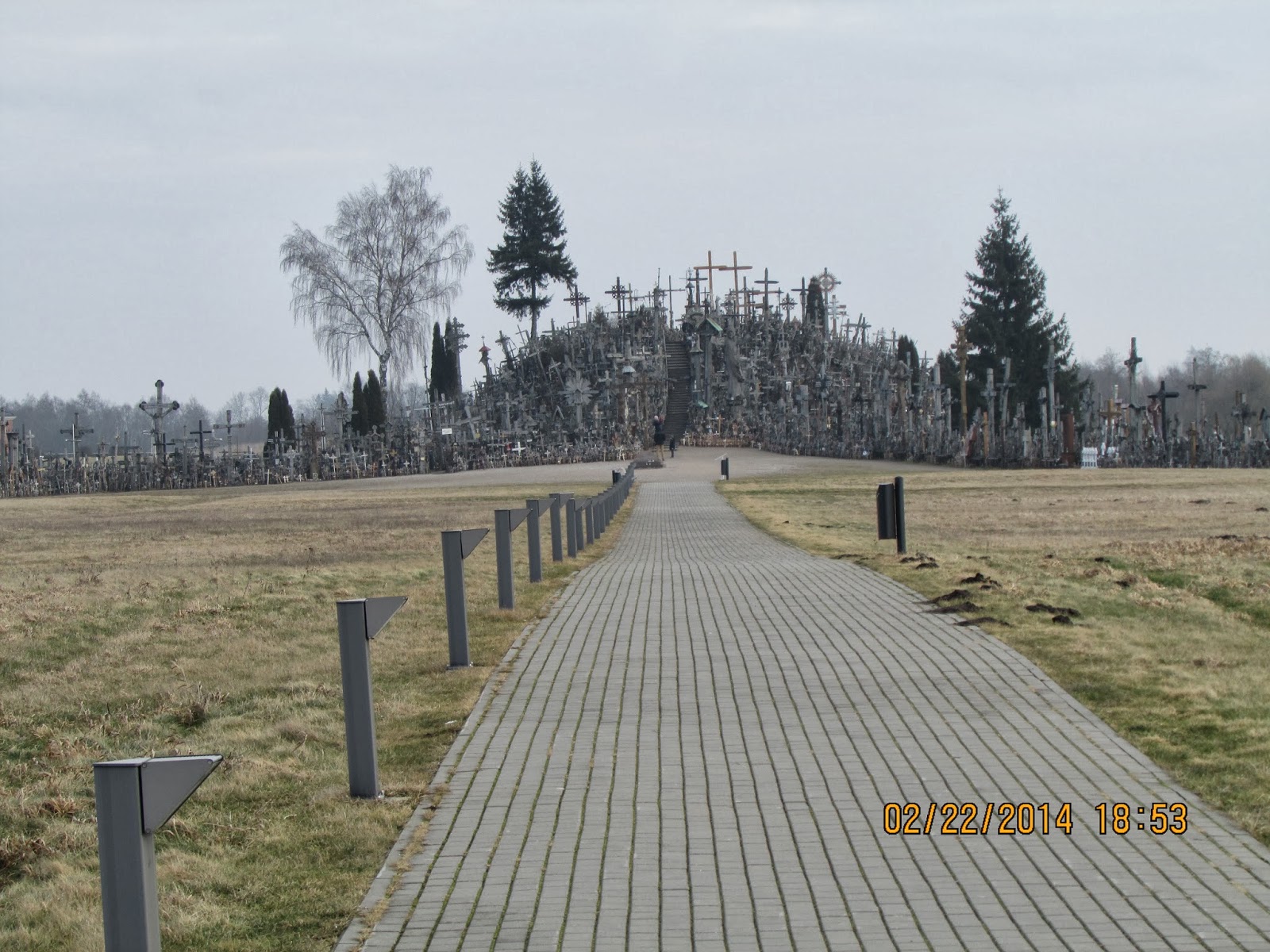Ever since we found out that we would be spending
spring semester in Šiauliai, Lithuania, we have been reading about the Hill of
Crosses, a major Roman Catholic pilgrimage site that is probably Šiauliai’s
best-known tourist attraction; the locals call it Kryžų kalnas. It’s actually
about 12 kilometers outside of town, so for non-motorists such as ourselves the
drill involves a regional bus, and then a 25-minute hike to the site
itself. I suppose it makes sense that a
pilgrimage site requires at least a little bit of walking.
The story behind the Hill of Crosses is pretty
simple. In the 19th century,
the site was home to a bastion, or fort, where battles were fought
during the several insurrections of Poles and Lithuanians against the Tsarist
authorities. Family members started to
plant crosses to commemorate sons lost in the insurrection, and as recently as
1922 the number of crosses, according to an article in Wikitravel, was not more
than 50. By the beginning of World War
II, the same source says there were maybe 400, but they didn't yet possess the
kind of eloquence that they were to acquire with the post-war Soviet
occupation.
What happened under the Soviets is that planting a
cross on the site became a way of expressing contempt for the officially atheistic
state. Luckily, the Soviets cooperated
by razing the site on at least three different occasions.
One by one, under cover of darkness, the crosses would be replaced, and now they number at least
100,000. In 1993, Pope John Paul II
visited the site, where the Polish pope left behind a characteristically modest tribute to the piety of the
Lithuanian people.
As Protestants and members of the Anglican
communion, Jane and I were both a little dubious about the Hill of Crosses, which
struck us as having the potential to be more than a little tacky. We have encountered kitsch at a few roadside shrines in the United States, and also at a few Roman
Catholic heritage sites in Italy, and we can attest that it is no fun to be
embarrassed by someone else’s cultural icon.
As it turned out, we found the Hill of Crosses to be
quite moving. For sure, it is a photogenic
site. There is every conceivable kind of
cross there, with no sense that some are more equal than others. There is no principle of order or subordination among the crosses. Perhaps the crosses do express the piety of
the Lithuanian people, but they also seemed to us, like the “talking statues”
of Rome, to be making a political statement, one that we found congenial.







No comments:
Post a Comment